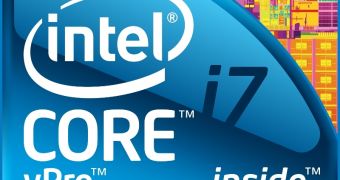Intel is slowly drifting away from the LGA socket type, the one that allows you to swap the CPU for another on a motherboard. Then again, for Broadwell, that doesn't mean much, seeing as how most of them are mobile CPUs that aren't likely to be up for replacement anyway.
Intel released little info on the successors to Haswell, at least officially, but there have been enough roadmap leaks and reports to paint a fairly clear picture of the 2014-bound lineup.
The following will be a summary of the next generation of Intel CPUs, scheduled for the second half of 2014.
There will be three main collections of Broadwell units: "H," "U" and "Y" types.
The "Y" series is made of ultra low power SoCs (system-on-chip devices), the kind used in tablets and even phones (if Intel gets lucky enough and scores design wins anyway).
There are 4.5W and 3.5W TDPs on some SKUs, which isn't bad for dual-core units with GT2 integrated graphics, LPDDR3-1600 memory (up to 8 GB supported) and 4 MB cache.
The "U" series also focus on energy efficiency, but they can't go lower than 28W and 15W because laptops and slates need more than what the TDPs of "Y" chips allow. These are full CPUs as it were, not SoCs.
They still have up to 4 MB cache and 8 GB of LPDDR3-1600 memory though, as well as 2 CPU cores and GT2 graphics (GT3 on the 28W Core i3/i5/i7 chips and GT1 on Celeron and Pentium).
Finally, the "H" series is the high-performance one, composed of dual-core and quad-core CPUs with GT3 or GT2 Iris pro graphics, plus up to 6 MB of cache memory and 32 GB DDR3L-1600 memory controllers.
They will have TDPs of 47W, some even configurable thermal design power allowing them to work at 37W at the cost of performance. HM86, HM87, and QM87 Haswell chipsets will support them, not just the new HM97 core-logic. There will be SoCs too, integrated into the Broadwell PCH-LP chipset, with similar specs.

 14 DAY TRIAL //
14 DAY TRIAL //